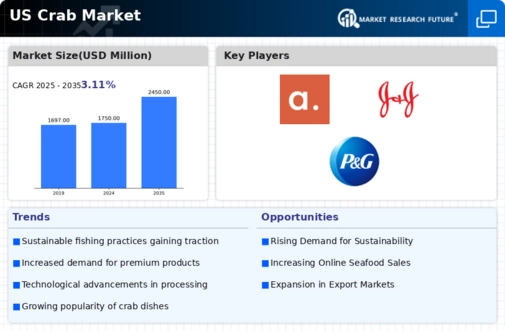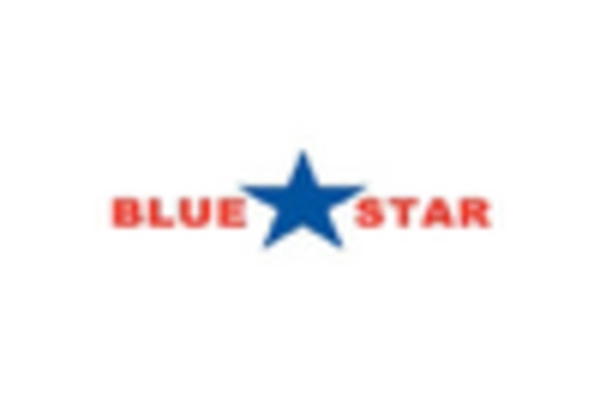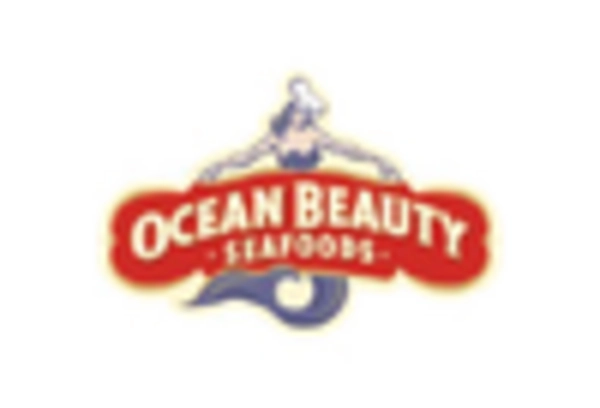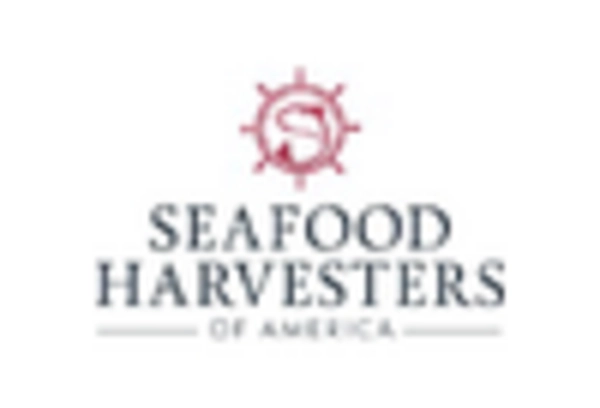Rising Demand for Seafood
The crab market is experiencing a notable increase in demand for seafood products, particularly crab. This trend is driven by a growing consumer preference for high-quality, fresh seafood, which is perceived as a healthier alternative to red meat. According to recent data, seafood consumption in the US has risen by approximately 15% over the past five years, with crab being a significant contributor to this growth. The increasing popularity of crab dishes in restaurants and at home is further fueling this demand. As consumers become more adventurous in their culinary choices, the crab market is likely to benefit from this shift towards seafood, leading to potential revenue growth and market expansion.
Expansion of Distribution Channels
The crab market is witnessing an expansion of distribution channels, which is crucial for reaching a broader consumer base. The rise of online grocery shopping and delivery services has made it easier for consumers to access fresh crab products. In 2025, it is estimated that online sales of seafood will account for approximately 25% of total seafood sales in the US. This shift in consumer purchasing behavior is prompting traditional retailers to adapt their strategies, ensuring that crab products are readily available to meet the growing demand. The diversification of distribution channels is likely to enhance market penetration and drive sales in the crab market.
Culinary Trends Favoring Crab Dishes
Culinary trends are significantly impacting the crab market, as chefs and home cooks alike are increasingly incorporating crab into their menus. The rise of gourmet dining experiences and the popularity of crab-based dishes, such as crab cakes and crab boils, are contributing to the industry's growth. Additionally, social media platforms are amplifying the visibility of crab dishes, inspiring consumers to experiment with crab recipes at home. This trend is likely to sustain interest in crab products, leading to increased sales and market expansion. As culinary creativity continues to flourish, the crab market may see a sustained boost in demand.
Technological Advancements in Fishing
Technological innovations in fishing practices are transforming the crab market. The adoption of advanced fishing equipment and techniques, such as sonar technology and GPS tracking, enhances the efficiency and sustainability of crab harvesting. These advancements not only improve catch rates but also reduce bycatch, aligning with environmental regulations and consumer preferences for sustainable seafood. The integration of technology in the industry is expected to increase operational efficiency, potentially leading to a reduction in costs and an increase in profitability. As the industry embraces these innovations, it may attract new investments and drive growth in the crab market.
Increased Focus on Quality and Traceability
Quality and traceability are becoming paramount in the crab market. Consumers are increasingly concerned about the origins of their food, leading to a demand for transparency in sourcing and production practices. The industry is responding by implementing traceability systems that allow consumers to track the journey of crab products from ocean to table. This focus on quality assurance not only builds consumer trust but also aligns with regulatory requirements. As the market evolves, companies that prioritize quality and traceability may gain a competitive edge, potentially influencing purchasing decisions and driving growth in the crab market.

















Leave a Comment